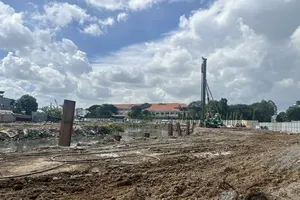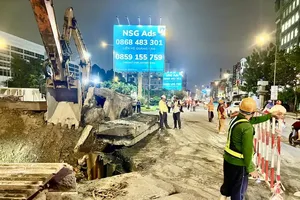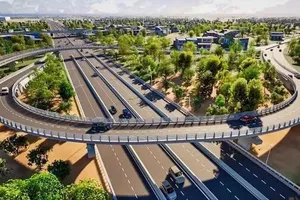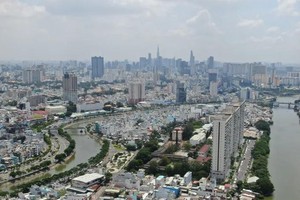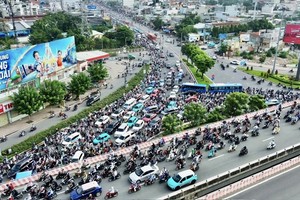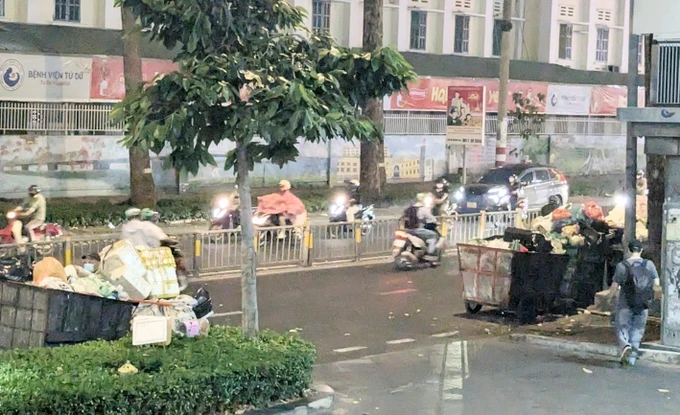
Dr Vo Trung Tin, Head of the Land Law and Environment Department (HCMC University of Law) informed that according to Decree 45/2022/ND-CP, outlining administrative penalties for environmental violations, the fines for littering range from VND100,000 to 2 million (US$4 – 77.5).
This, frankly, falls short of being a genuine deterrent. Many individuals simply opt to pay the fine rather than modify their behavior. Furthermore, the enforcement of these penalties is often lax, creating a sense of ‘fines for show’. What is evidently absent is the integration of supplementary penalties, such as mandatory community service, which has proven effective in other countries.
He then suggested that to truly bolster the effectiveness of these penalties, it is essential to consider significantly increasing the fine amounts, perhaps doubling or tripling the current figures, or at the very least, implementing a 20-30-percent increase for repeat offenders. Concurrently, adopting supplementary penalties, like requiring offenders to perform public cleaning duties, would instill a more profound sense of accountability.
Moreover, a more rigorous application of remedial measures is crucial. Restoring the affected area to its original condition should be mandatory in all cases, not just a select few. When pollution occurs, immediate and thorough remediation should be enforced, a practice currently underutilized.
Tran Thuong from the Management Board of Sunview Apartment in Tam Phu Ward of Thu Duc City (HCMC) shared that for many years, HCMC has been campaigning to prevent littering on streets and canals. While the city center’s streets, canals, and parks have seen improvements, a casual stroll through District 1, District 3, or even 23-9 (September 23) Park reveals that litter and plastic bags remain a persistent issue.
To truly enforce the no-littering policy, a multifaceted approach that goes beyond awareness campaigns and fines should be applied. Investing in robust infrastructure is paramount. This means strategically placing more trash bins and waste collection points, making responsible disposal convenient for everyone.
In reality, even in the city’s core areas, the number of bins and collection points is woefully inadequate. To cultivate a genuinely civilized and modern city, convenience must be prioritized alongside punitive measures.
Director Vo Van Quyet of Thuan Thien Plastic Co. in HCMC commented that waste bins have to be environmentally friendly and user-centric. The root of the littering problem lies in the perception of public bins as unsanitary and repulsive. Many people recoil at the thought of approaching them, opting to toss trash from a distance.
A paradigm shift is needed. It is advisable to introduce bins that are not only environmentally friendly but also appealing and user-friendly. The current drab, odor-emitting designs must be replaced with modern, visually pleasing alternatives that prioritize hygiene.
In high-traffic areas like city center streets, parks, and transportation hubs, bins should be more than just functional. They should be visually engaging, especially for tourists and children, and meticulously maintained. Providing such bins encourages responsible disposal, contributing to a cleaner, greener city. This seemingly minor change can have a significant positive impact to make HCMC greener and more appealing.
Nguyen Van Loi, a resident in an apartment building on Nguyen Thi Minh Khai Street in District 3 of HCMC proposed more strategic placement of waste collection points to minimize disruption.
For instance, on Nguyen Thi Minh Khai Street near the Sai Gon Giai Phong Newspaper building, a makeshift waste collection point has become a persistent eyesore. This long-standing site, right next to the building’s entrance, is a source of frustration.
Daily, waste collectors sort refuse on the sidewalk, obstructing pedestrian traffic. In the evenings, garbage trucks block the building’s entrance, creating traffic hazards. This area also serves as an unofficial restroom for motorbike taxi and ride-sharing drivers, forcing pedestrians to endure unpleasant odors.
While waste collection and sorting points are essential, their placement must be carefully considered to minimize disruption and maintain public hygiene. Urban management authorities must ensure that these points are strategically located and operate with rigorous environmental standards. Furthermore, stricter regulations are needed to govern the location and operation of waste disposal facilities.


